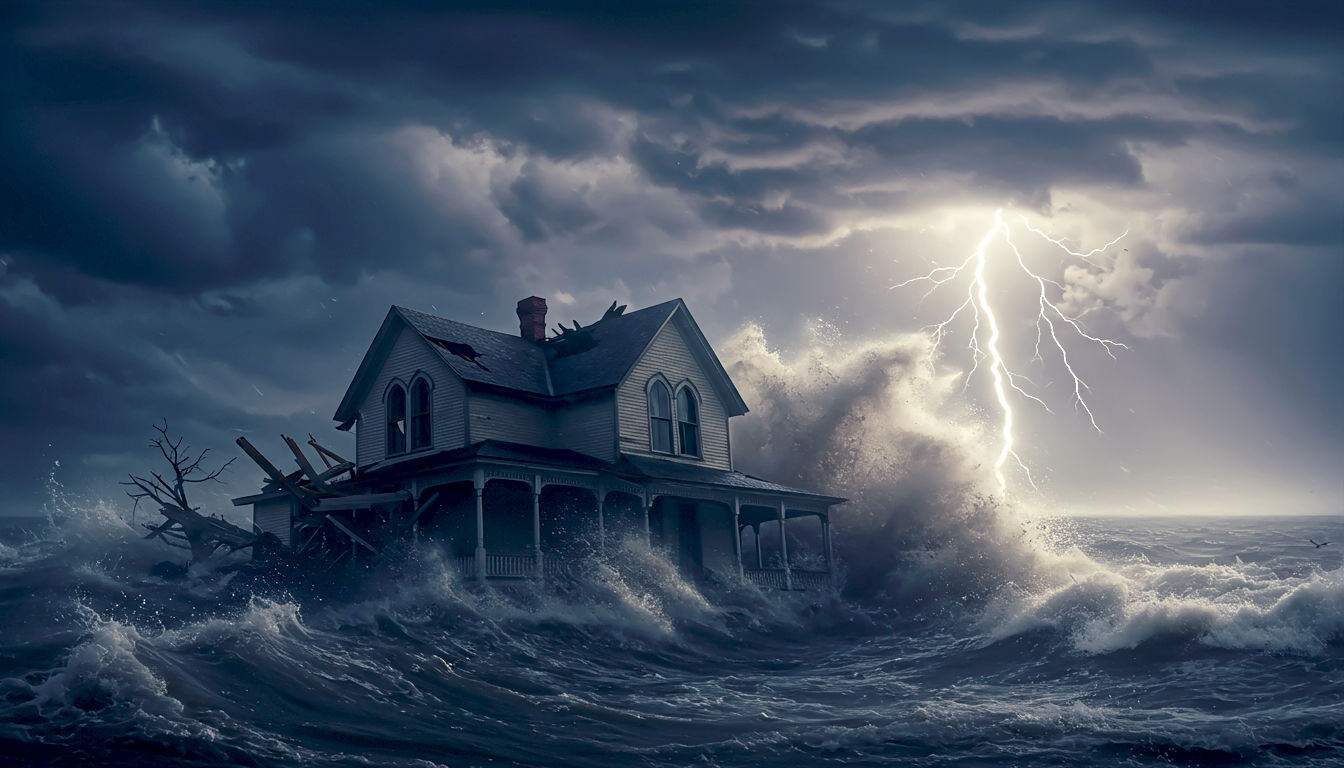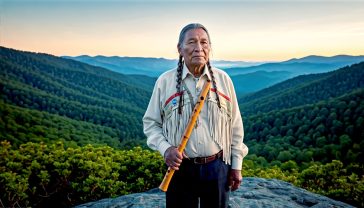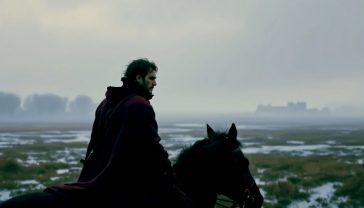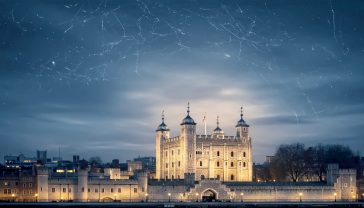The Deadliest Storm: Uncovering the Worst Natural Disaster in US History
An in-depth look at America’s deadliest disasters, from the forgotten Galveston hurricane of 1900 to the modern tragedy of Hurricane Katrina.

This post may contain affiliate links. If you make a purchase through these links, we may earn a commission at no additional cost to you.
It’s a question that sounds like it should have a simple answer: what was the worst natural disaster in American history? Most of us think we know what a disaster looks like. We see the dramatic footage on the news – churning floodwaters, buildings reduced to rubble, and the heartbreaking stories of those who lost everything. We might think of Hurricane Katrina, a tragedy that played out on our TVs in 2005. Or maybe the great San Francisco earthquake of 1906, a story so famous it’s become a part of legend.
But the real answer is more complex and, in many ways, more terrifying. The title of the “worst” natural disaster depends entirely on how you measure it. Is it the number of lives lost in a single, brutal blow? Is it the eye-watering cost of the damage, running into the billions? Or is it the sheer failure of systems and government that leaves its own people stranded?
The truth is, America’s history is scarred by several contenders for this grim title. Each one is a cautionary tale, a story of nature’s immense power and, often, human arrogance and error. But one event, largely forgotten by the wider world, stands head and shoulders above the rest in its shocking death toll. It happened over 120 years ago, in a booming city of boundless optimism, and it remains the deadliest day in the history of the United States.
This is the story of the 1900 Galveston hurricane.
The Undisputed Champion of Death: The 1900 Galveston Hurricane
To understand the scale of what happened, you first have to understand Galveston, Texas, at the turn of the 20th century. This wasn’t some sleepy backwater; it was one of the wealthiest and most important cities in America.
The ‘New York of the Gulf’: A City on the Brink
Sitting on a long, thin barrier island, Galveston was a bustling port city, a hub of trade and immigration. Its grand Victorian architecture, banks, and cotton exchanges earned it the nickname the “Wall Street of the Southwest.” People believed its future was limitless. They also believed it was safe.
The city’s leaders, and indeed its residents, thought that the gentle slope of the seafloor in the Gulf of Mexico made it impossible for a major hurricane to do serious damage. They’d seen storms before, of course, but they’d always passed without catastrophe. The city’s highest point was a mere 8.7 feet (about 2.6 metres) above sea level. This thin sliver of sand, teeming with life and ambition, was dangerously exposed. But in the booming optimism of the age, few paid it much heed.
A Storm is Brewing: Arrogance and a Fatal Mistake
Weather forecasting in 1900 was a young and inexact science. In America, it was controlled by the U.S. Weather Bureau, a government body that was fiercely proud and territorial. They had a bitter rivalry with Cuban meteorologists, who had far more experience with the tropical cyclones that brewed in the Caribbean. The Cubans were brilliant forecasters, but the Americans, driven by a mix of national pride and professional jealousy, often dismissed their warnings.
As a storm moved over Cuba in early September, the Cubans predicted it would head towards Texas. The U.S. Weather Bureau disagreed. They thought it would curve east towards Florida and the Atlantic coast. They were disastrously wrong.
The Bureau’s man in Galveston was Isaac Cline. He was a respected scientist who, years earlier, had written an article arguing that a major hurricane hitting Galveston was an “absurd delusion.” He, like everyone else, put his faith in the city’s supposed geographical protection. He received the Bureau’s faulty forecast and saw no reason to panic the public. This confidence would prove to be a fatal mistake.
The Wall of Water: Saturday, 8th September 1900
The day began with an unsettling sense of unease. The skies were odd, the sea swells were unusually large, and a stiff wind blew from the north. By the afternoon, the city was flooding, not from the sea, but from the bay on its other side. The storm was pushing water into the bay like a bathtub, and it was now spilling back into the streets.
Then the wind shifted, and the true horror began.
The hurricane, a monster we’d now classify as a Category 4, slammed into the island. But it wasn’t the wind that was the real killer. It was the storm surge. The hurricane pushed a colossal wave of seawater, a wall of water estimated to be over 15 feet (4.6 metres) high, directly over the island.
There was nowhere to run. The highest point of the city was submerged in minutes. Houses, built mostly of wood, were lifted from their foundations and became battering rams, smashing into other houses in a terrifying domino effect. Isaac Cline, the man who believed his city was safe, watched in horror as the water rose inside his own home. He, his wife, his brother, and his three daughters were forced to huddle together as the house collapsed around them. He survived by clinging to debris, but his pregnant wife was lost to the waves.
Across the city, thousands shared a similar fate. They were crushed by their own homes, drowned by the churning water, or killed by flying debris. The noise was said to be a deafening roar, a combination of the shrieking wind and the constant grinding sound of a city being destroyed.
The Silence After the Storm
By the next morning, the storm had passed. The survivors emerged into a world of unimaginable devastation. An eerie silence had replaced the roar of the hurricane. Where a city of nearly 40,000 people had stood, there was now a wasteland of splintered wood, rubble, and bodies.
One-third of the city had been completely wiped off the map. A mound of debris, several metres high, stretched for miles where the beachfront homes had once been. And everywhere, there were the dead. The official death toll is unknown, but modern estimates place it between 6,000 and 12,000 people. To put that in perspective, it’s more than the combined deaths of Hurricane Katrina and the 9/11 attacks.
The survivors faced a grim and gruesome task. With thousands of bodies decaying in the Texas heat, disease was a major threat. At first, they tried to bury the dead, but there were too many. In a desperate act, they began loading bodies onto barges and burying them at sea. But the currents brought them back, washing them onto the very beaches where they had died. Finally, the authorities made a terrible decision: the bodies had to be burned on massive funeral pyres. For weeks, the air in Galveston was thick with smoke and the smell of death.
From the Rubble: A City Reborn
The Galveston storm was a national trauma. It revealed the deadly cost of hubris and the terrifying power of nature. But what happened next is one of the most remarkable stories of resilience in American history.
The people of Galveston didn’t abandon their island. They decided to rebuild, and to do so in a way that would ensure such a tragedy could never happen again. They embarked on two incredible engineering projects:
- The Galveston Seawall: They built a massive concrete seawall, 17 feet high and eventually over 10 miles long, to protect the city from storm surges. It was an astonishing feat of engineering for its time.
- Raising the City: This was even more ambitious. Engineers devised a plan to physically lift the entire city. They sectioned off areas, raised thousands of buildings – including the 3,000-ton St. Patrick’s Church – on giant jackscrews, and pumped in millions of cubic yards of sand and silt from the seafloor to raise the ground level, in some places by as much as 17 feet.
These projects were a triumph of human ingenuity and determination. Galveston was never the same – it lost its status as a premier port to nearby Houston – but it survived. The seawall has since protected the city from numerous hurricanes, including major ones like Hurricane Ike in 2008.
More Than Just a Number: Other Contenders for the ‘Worst’ Disaster
While Galveston holds the record for the highest death toll in a single event, other disasters have earned the title of “worst” through different, equally horrifying, metrics.
When the Rich Played and the Poor Paid: The 1889 Johnstown Flood
This disaster wasn’t purely natural. It was a terrifying mix of heavy rainfall and catastrophic human failure. Above the working-class town of Johnstown, Pennsylvania, was a huge man-made lake held back by the South Fork Dam. The dam was owned by the South Fork Fishing and Hunting Club, an exclusive retreat for some of America’s richest industrialists, including Andrew Carnegie and Henry Clay Frick.
The club had made cheap and shoddy repairs to the dam over the years, ignoring warnings from engineers. On 31st May 1889, after a night of torrential rain, the dam failed. A wall of water equivalent in force to the flow of the Mississippi River roared down the valley, wiping Johnstown off the map in just 10 minutes. More than 2,200 people were killed. It was a tragedy born from the negligence of the wealthy, with the price paid by the poor.
The Earth Shook, But the Fire Devoured: The 1906 San Francisco Earthquake
The great earthquake of 1906 was immensely powerful, but most of the destruction came after the shaking stopped. The quake ruptured gas lines across the city, and fires broke out almost immediately. With water mains also broken, firefighters were helpless.
For three days, a firestorm raged, consuming over 80% of the city. It was a scene of chaos and martial law, where soldiers were ordered to shoot looters on sight. The estimated death toll of around 3,000 was devastating, but the true impact was the near-total destruction of one of America’s most iconic cities.
The Forgotten Storm: The 1928 Okeechobee Hurricane
Similar to Galveston, this hurricane, which struck Florida, caused a catastrophic storm surge. But this time, it was in a lake. The storm pushed the waters of Lake Okeechobee over a flimsy mud dike, drowning the poor communities around it. An estimated 2,500 people died, the vast majority of whom were poor, black migrant farm workers. Their deaths went largely uncounted and unmourned by the authorities for decades, making it a stark example of how a disaster’s impact can fall along racial and class lines.
A Modern Apocalypse: Hurricane Katrina (2005)
For many of us, Katrina is the first disaster that comes to mind. It was not the deadliest, with a final death toll of over 1,800, but it was the costliest natural disaster in US history, causing an estimated $125 billion in damage.
The horror of Katrina was not just the storm itself, but the failure of man-made flood defences – the levees – and the astonishingly slow and inept response from the government. The world watched in disbelief as an American city descended into chaos, with its poorest citizens, mostly African American, left stranded in flooded neighbourhoods or packed into the squalor of the Superdome. Katrina exposed deep-seated issues of race, poverty, and government incompetence to a global audience.
An Island Left in the Dark: Hurricane Maria in Puerto Rico (2017)
Hurricane Maria revealed a different kind of disaster: a slow-motion catastrophe on an island that is part of the US, but often treated as an afterthought. The initial official death toll was just 64. But it soon became clear this was a massive underestimate.
The storm completely destroyed Puerto Rico’s power grid, plunging the island’s 3.4 million residents into darkness. Without power for hospitals, clean water, or communications, the death toll slowly mounted. It was months before a more accurate picture emerged. A study by George Washington University, later accepted by the island’s government, estimated the true death toll was 2,975. It was a disaster defined by a prolonged collapse of basic services and a feeling of abandonment by the mainland government.
So, What Was the Worst Natural Disaster in US History?
After looking at the contenders, it’s clear there’s no single, easy answer. The “worst” disaster is a title with multiple claimants, depending on the criteria you use.
Measuring Tragedy: A Grim Comparison
- By Death Toll: The 1900 Galveston Hurricane is the undeniable winner. No other single event comes close to its horrific loss of life.
- By Economic Cost: Hurricane Katrina holds this unfortunate record. When adjusted for inflation, its cost dwarfs all others, a reflection of the massive urban infrastructure that was destroyed.
- By Lasting Impact: This is harder to measure. Galveston’s disaster led to incredible engineering feats and a new form of city government. The Johnstown flood led to changes in dam safety laws. Katrina and Maria forced a painful national conversation about race, inequality, and government responsibility that continues to this day.
The Gathering Storm: Are the Worst Disasters Still to Come?
While Galveston remains the deadliest single day in American history, the story of these disasters is a sobering reminder that our modern world is not immune to nature’s power. With a changing climate promising more frequent and intense storms, rising sea levels, and more extreme weather of all kinds, the question is not if another catastrophic disaster will happen, but when.
Each of these stories – Galveston, Johnstown, Katrina, Maria – teaches us the same lesson. Disasters are not just about wind speeds and water levels. They are about people, politics, and priorities. They expose the cracks in our society, our infrastructure, and our leadership. And they remind us that the worst disasters are often those we fail to prepare for, born from a dangerous belief that it could never happen here.
Further Reading
For those interested in delving deeper into these events, here are some highly respected resources:
- National Oceanic and Atmospheric Administration (NOAA): The official source for US weather data and historical storm information. Their reports on Galveston and Katrina are incredibly detailed.
- Federal Emergency Management Agency (FEMA): Provides information on disaster preparedness and US government responses.
- The 1900 Storm – Galveston Island, Texas: A dedicated website from the Galveston & Texas History Center with archives, photos, and survivor accounts.
- “Isaac’s Storm: A Man, a Time, and the Deadliest Hurricane in History” by Erik Larson: A brilliant, bestselling book that reads like a thriller, telling the full story of the 1900 Galveston hurricane.
- “Five Days at Memorial: Life and Death in a Storm-Ravaged Hospital” by Sheri Fink: A Pulitzer Prize-winning investigation into the harrowing events at a New Orleans hospital after Hurricane Katrina.






